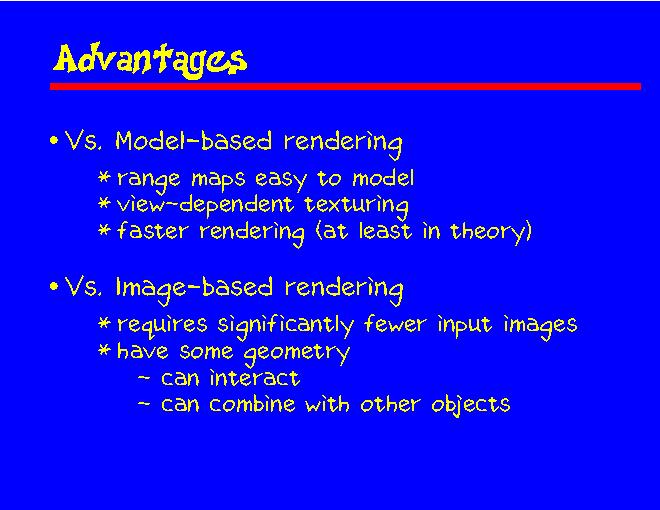Click slide for next, or goto previous, first, last slides or back to thumbnail layout.

Click slide for next, or goto previous, or back to thumbnail layout.
Click slide for next, or goto previous, first, last slides or back to thumbnail layout.

Click slide for next, or goto previous, or back to thumbnail layout.
To summarize, let's go through the advantages of view-based rendering over model-based and image-based rendering.
First, creating view-based models is easier than creating full object models, especially if the object has very convoluted geometry. We get view-dependent texturing which is more realistic than static texturing. And because view-dependent texturing, we can model the object using very simple meshes, which can be rendered fast. As soon as there is better hardware support for image compositing, we may start to expect faster rendering for a fixed level of image quality.
The advantages with respect to image-based rendering are twofold and are a direct consequence of having explicit geometry information. First, we need significantly fewer input images. Second, we can much better interact with the object, say, in a virtual environment, and we can better composite several models because we have the information needed to cope with interobject occlusions.